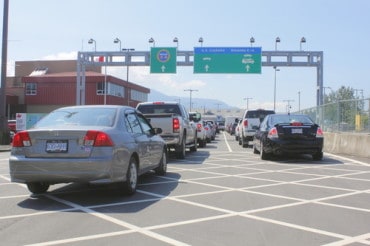
Technical and cultural obstacles that prevented more widespread use of real-time systems and applications are disappearing, thus making them more common.
Real-time systems have been around for decades but were only used for special purposes. Now, real-time applications are critical for safety and security, as well as for business success. Fortunately, technical and cultural obstacles that prevented more widespread use are disappearing. RTInsights recently sat down with Paul Butterworth, co-founder and CTO of VANTIQ, to discuss these issues, what’s changed that makes it easier to develop and deploy real-time applications, and more.
Here is a summary of our conversation.
RTInsights: For the last ten years, analysts and companies have talked about the benefits of real-time business operations and the need to move in that direction. What prevented this from happening?

Butterworth: It hasn’t been completely prevented, but I would say it’s not developing as fast as everybody expected ten years ago. The realities of both the physical environment and everyone’s knowledge of building real-time systems have had a play in slowing down the adoption of these kinds of systems. For example, many people talk about real-time systems that do tracking. Imagine that you could, today, pretty much track anything under any conditions. We and our customers have been finding it is a lot harder to do than you think. Suppose you want to track, let’s say, packages, and you’re interested in tracking them in real-time. That means you must have some sort of a device on the package that can broadcast its location and some way to pick up those broadcasts and get them back to the IT systems trying to do the tracking.
Suppose you’re willing to spend enough money to track each package. In that case, you can probably do that because you can use cellular technology to transmit the data in pretty much any environment. But if you’re trying to do this at a low cost, the capabilities to track it in an arbitrary location are difficult to find. In many cases, they will work in some regions and not others. So, if you’re tracking in major urban areas, you might not have m a problem. But if you’re trying to track around the globe, those systems may not be available in every location. That just makes it more difficult to accomplish and more costly to do it. So, it may not be cost-effective.
Surprises like that often come up. Another example is using cameras to do tracking. I am guilty of this. “Oh, well, we have cameras. We’ll just put them up, and we’ll start tracking stuff.” Well, there might be environmental conditions that will cause problems with that. You must think about what happens if you’re tracking in very bright environments or very dark environments. I know your average webcam doesn’t have all those capabilities, and many times you don’t realize that until you get into the project. And a lot of times, those things always slow you down. If you run into enough roadblocks and hurdles, people will just give up on the project. That’s one area that slowed down the adoption of real-time streaming systems.
The other big thing that we see out there is that the technical people are used to building traditional IT applications. They aren’t that familiar with real-time systems. And real-time systems have a different style and a different architecture to them.
What happens is that people try to build real-time systems using traditional techniques. That either becomes expensive because you must throw more and more hardware at the problem. Or you just can’t get the systems to run fast enough. Or you can’t get them to be reliable enough to do the real-time processing that you expect in those environments.
Another thing we see is that you have to be able to think about real-time systems and how they will help your business. Many times, if you haven’t got some familiarity and some experience with building these kinds of real-time streaming systems, it’s really hard to imagine how they’re going to help you. And so, industry education is another element to consider. That’s another part of what’s been slowing the adoption of real-time and streaming systems.
RTInsights: There’s been some progress in real-time systems recently. Given the current state of the real-time market, how did we get here?
Butterworth: What’s causing things to improve? Well, it’s a little bit of everything. The underlying technology’s improving, and networks are getting better. Computing systems are getting faster and less expensive, so they can be more easily applied to some of these problems in a cost-effective fashion. A big thing is that edge computing is evolving; many of the real-time systems have an IoT flavor to them.
If you’re building real-time systems that track physical stuff, there are sensors out in the world. And those sensors must be connected to computing infrastructure in some way. Typically, the most cost-effective way to do that is to connect them to edge computing capabilities. There’s been a lot of talk about it over the last 10 or 15 years, but it’s been hard to do unless you already had the infrastructure deployed. If you were trying to monitor stuff in every store, had thousands of stores, and didn’t already have computing infrastructure in those stores, getting the compute capacity out there was a daunting task.
But there’s been a lot of progress in this area. Many suppliers are working hard to make it easier to do edge computing. Mobile telephone network operators with MEC [multi-access edge computing] technology, other edge suppliers, content delivery networks, and others offer capabilities. The big cloud providers are trying to do something to help support edge computing. All of that is making it easier for customers to deploy devices out in the world and hook them up to computing infrastructure. And more of that computing infrastructure is available or is going to be available as a service. To go along with that, networking is getting more ubiquitous and faster all the time. So, all that kind of infrastructure is helping to solve the problem.
Complementing these different technologies’ availability is that we have more people becoming educated on building real-time systems. More businesses are starting to understand how real-time and streaming systems can help their businesses. They see the use cases.
Also, the tools that are available for doing real-time and streaming processing are continuing to improve. When everything was a hard real-time system, it was very difficult to build those systems in the early days. You had to work very close to the hardware to get the performance that you were looking for.
Nowadays, hard real-time systems are easier to build because the technology is there. And soft real-time systems are easier to build because there are much better tools out there, and you can work at much higher levels. There’s the beginnings of low-code and no-code solutions that work in these streaming environments. What we’re doing [at Vantiq] is an example of that capability.
So, we have better knowledge, better underlying technology, and better tools. That is helping to accelerate the adoption of these systems today.
RTInsights: What’s the impact of all of this on development and deployment environments?
Butterworth: Development environments are getting better. That is important because building real-time systems, streaming systems, differs from building traditional IT data processing applications. You need tools that are specialized or that optimize the construction of real-time streaming architectures to make teams the most productive.
Several things are going on. There’s software, such as messaging systems and event brokers, that you need to run real-time environments. There are productivity tools that make it possible for you to build these applications by operating at a much higher abstraction level. Many times, the tools will integrate the infrastructure underneath the application. So, you never have to worry about that. All you have to think about is what your real-time system needs to do and how you express that in a high-level development environment. That makes a huge difference.
It’s one thing to say you can develop the systems more quickly and efficiently, but you need a full suite of tools. Once you get applications developed, you have to deploy them and deployment into distributed and edge environments. That can be quite complicated. Having tooling to help you with that is always important.
You also need tools to help manage real-time distributed systems. This is important because anyone familiar with distributed systems knows that it’s very difficult to manage them unless you have some good information and instrumentation on what each part of the system is doing. If something goes wrong, which part of the system is responsible?
You need to have tooling across the life cycle of real-time applications to take advantage of these systems and make them more cost-effective.
RTInsights: Isn’t there more than just technology involved? Don’t you have to change mindsets for companies to embrace real-time systems and applications?
Butterworth: Businesses need to understand how this technology can help them. It might help by improving productivity or providing better service to customers.
One of the things we look at is how to reduce the burden on customers to provide them with information. Traditionally, pretty much all businesses were looking for information for customers. They’d put up some form and have folks type all that information in.
If real-time systems are available, it might be that the sensors in the environment can provide context and help answer some questions. An obvious example is location-tracking information. You already know where the customer is. You don’t have to ask that question. If you know where a customer is, you might be able to provide them with better information concerning how your products or your service relates to the environment that they’re in.
Another example is using a smartphone or some other device, so users don’t have to do a lot of data entry. Many times, you can just take a picture of something. The system can extract data from that in real-time and feed that back to you. That’s great, especially with industrial equipment where you’re in a tough environment. You have many distractions, and typing in serial numbers off a piece of equipment is incredibly error-prone. Taking a picture will solve the problem instantly.
RTInsights: How does VANTIQ help with real-time systems and real-time application development?
Butterworth: We think of this as our specialty. Our goal is to help our customers conceptualize, build, deploy, and operate real-time, event-driven systems. We want to make it as easy as possible for you to build these things.
At the same time, we make you more productive. We’re providing the mission-critical infrastructure that these applications run on. If you have to build larger applications, you don’t have to give up on high productivity. You can build very large applications with VANTIQ that ingest data at very high rates, process that data at high rates, and can provide you with a real-time response in such a high traffic environment. That’s a unique proposition. Usually, high-performance systems and high-productivity tools don’t fit together very well. But that’s been our goal from the start. If your system runs thousands, tens of thousands, or hundreds of thousands of events a second, you can build them in our production environment, deploy them, manage them, and run them reliably. And that’s a unique proposition at this point in time.
RTInsights: What are some interesting use cases?
Butterworth: Some of the most popular ones in our user community at the moment are security and safety applications. A lot of this has been driven by the Coronavirus. People are trying to make their work environments safer. When you start thinking about that, you realize there are other kinds of security and safety things you can do using the same technologies. You have cameras and sensors of various kinds that can track where people are.
That’s very helpful in emergency situations when you need to evacuate an area or evacuate a building. Knowing where people are and whether there’s anyone left in the area becomes a valuable feature of those kinds of real-time systems. A similar use case is congestion management, making sure crowds are not growing in particular areas. If you can do these things in real-time, you can keep bad situations from happening.
We see a number of energy-related real-time systems. One kind is just monitoring an electrical grid. Customers are trying to see when there’s a problem with the grid. Some of these applications are just about tracking more precisely where the power outage is and then notifying their customers in that area about what’s going on, the expected time to repair, and how extensive the problems are. It’s not just about controlling the grid, but providing better service to their customers.
We see some retail applications, particularly around interacting with customers to provide them with a better service or more relevant information based on where they are and what they are doing at the moment. We also see more back-office applications of real-time things, for instance, more real-time updating of prices in stores using more modern, electronic pricing systems. Rather than updating these systems daily or once every couple of days, they’re doing it in near real-time.
There also are more IoT-enabled, connected retail environment applications. That includes smart shopping carts, smart shelf labels, and things like that. With smart shopping carts for grocery stores, a customer just drops things in the cart, and the system figures out what they are and how much you pay for them. If there are things that you pay by weight, they have a little scale, and they can just measure the things on the fly when you fill up the basket. The price is right there, and you get charged for that stuff, and you’re ready to go. Those are very cool.
And then, as a bigger picture, maybe more loosely defined is smart buildings. What are all the pieces to pull together into creating a smart space solution that might have elements of everything we’ve talked about but combining them into one whole?
You see this happening with smart buildings. The buildings are equipped with individual systems. What if you want to optimize the total system across the whole building? That’s another area where VANTIQ comes into play. We try to pull together all the different energy management systems, plus the people tracking systems that can then interplay with the energy systems. You put all of that together, and you can build a much more sustainable environment.






